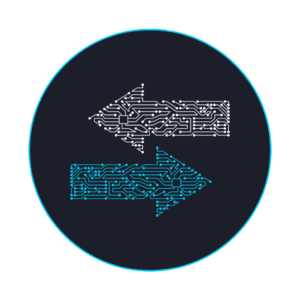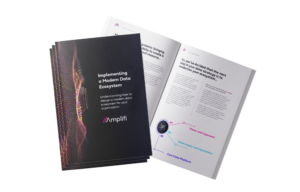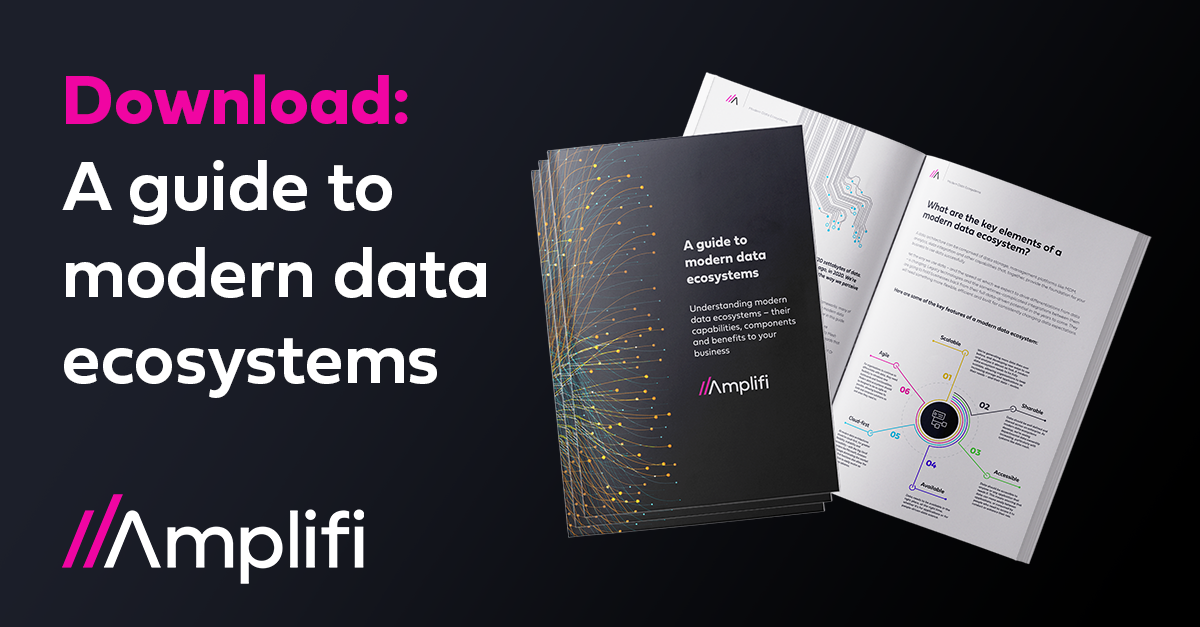You don’t need to throw everything away and start from scratch to have a modern data ecosystem. Here, Amplifi looks at how to utilize what you have for maximum impact.
Do you demolish your house every time you want to change it or add something new? Of course not. You (probably) use your existing foundations and build and adapt around it – adding more rooms, taking away walls, changing functionalities (a cupboard becomes a second bathroom, a dining room becomes an open plan kitchen), but ultimately working on the same house. Unless, of course, the house and its foundations are completely unfit for purpose – which more often than not, just isn’t the case.
 When you’re looking to build a modern data ecosystem, you may be able to apply the same logic. Just because you want to modernize your ecosystem – to achieve better scalability, agility, and all of the great benefits we talk about in our guide – it doesn’t mean you have to start rebuilding your tech stack from the foundations up. It’s likely that you already have at least some of the capabilities you need embedded in your architecture – the task is identifying what’s missing and making all of that technology, along with the people who interact with it, work better as a whole.
When you’re looking to build a modern data ecosystem, you may be able to apply the same logic. Just because you want to modernize your ecosystem – to achieve better scalability, agility, and all of the great benefits we talk about in our guide – it doesn’t mean you have to start rebuilding your tech stack from the foundations up. It’s likely that you already have at least some of the capabilities you need embedded in your architecture – the task is identifying what’s missing and making all of that technology, along with the people who interact with it, work better as a whole.
If you’re looking to modernize your data ecosystem, it’s important to stop and take stock of the features and capabilities you have in your existing architecture, and whether they can be integrated in a flexible, forward-thinking ecosystem.
Here, we look at some of the core differences between a traditional and modern data ecosystem: a ‘then vs now’ to help you review your software and systems. Remember, every ecosystem will be different, but you can find some of the core features you’re likely to need in our guide to implementing a modern data ecosystem.
Then: Central control
Data management, analytics, and even data science practices were often controlled by a central data and IT team. This pooled data skills in a central resource, making it difficult for every department to have autonomy and ownership of their data outcomes.
Now: Federated ownership
A modern data ecosystem democratizes data, making it widely accessible and available to different departments and functions. As a result, each business domain is in control of its own data and analytics outputs, achieving greater agility and scalability.
Then: Data as a corporate asset
Data was seen as a, sometimes intangible, asset belonging to the organization; a valuable asset, but with complex or undefined ownership, often resulting in low quality, poorly managed data. While central ownership works in theory, and can be the right choice for certain organizations or categories of data, it can also result in complexity. In reality, bloated data models that are bent out of shape to cater for everyone’s needs, end up satisfying very few, with data teams acting as go-betweens trying to negotiate solutions to incompatible requirements from multiple parties.
Now: Data as a domain-oriented product
Data, in a modern data ecosystem, becomes a domain-oriented product. Individual departments or domains take ownership of their own data, making it accessible to the rest of the business through a common platform (Data Mesh is a good example of this). Just like real-world products, data products should satisfy, even delight their consumers, and should have a managed lifecycle. It’s okay for multiple similar data products to exist if they satisfy the needs of different customers.
Then: Human-led analysis
When designing data solutions, analysis was performed exclusively by people, often requiring manually intensive activities and only as good as the requirements that were articulated. This is time-consuming and limits agility, but crucially, can also lead to incorrect answers – data models and processes that don’t truly reflect the way the organization works.
Now: Machine/AI-augmented analysis
A modern data ecosystem looks to combine the power of humans with that of advanced technologies such as artificial intelligence and machine learning. Your ecosystem should constantly monitor and analyze how the data within it is changing, moving, and being used in order to inform decision-making about how the ecosystem itself should evolve. This doesn’t mean automating everything, but rather making the best use of people, alongside advanced technology, to deliver on the most important outcomes for the organization.
Then: Multiple, disparate data platforms
Data platforms were introduced to fulfill specific tasks, rather than integrated into the ‘bigger picture’ of the organization’s data landscape. This often resulted in labor-intensive processes to integrate them or, at worst, solutions remaining un-integrated.
 Now: Data ecosystems
Now: Data ecosystems
A modern data ecosystem brings disparate sources, platforms, people, and technologies together, making data from multiple sources available to a wide range of evolving applications. It seeks interoperability between data from across the organization (and even between organisations) leading to greater agility and reducing the time to value for new data outcomes.
Then: Expert configuration
To extract commercial value from data – from analysis and reporting to automations – any part of the organization would need expert skills to fulfill the project. This reduced the agility and speed with which the organization could react with data.
Now: Self-service
One of the greatest benefits of a modern data ecosystem, self-service enables your organization to become truly self-sufficient with data. Teams are empowered to use data to deliver on their objectives, not view it as an abstract IT issue.
Then: On-premise solutions
Physical, on-premise storage and platforms made data systems slow to scale and difficult to change. As organizations began to sporadically move aspects of their architecture to the cloud, they created fragmented, poorly architected, and ungoverned solutions, with a mix of legacy on-premise and new cloud capabilities creating further complications.
Now: Cloud ecosystems
A modern data ecosystem is built on cloud capabilities, not just replicating their on-premise capabilities in the cloud, but evolving them to take advantage of the scalability that cloud brings. This makes it easier to add, remove, and change components – much like renovating a house. But cloud only increases agility and speed if it is part of a well-organized and well-integrated ecosystem.
How can you apply these factors to your own ecosystem?
When assessing your existing data landscape against the flexible, scalable ecosystem you want to create, you need to consider whether you have existing technologies that can fulfill the capabilities that your organization needs. Look at how the business is organized – where does ownership of data sit, are there bottlenecks that will limit scalability? Consider also whether modern approaches like Data Fabric or Data Mesh will work for your organization and, if so, invest in the foundational capabilities that will being these to life. For example, metadata management is a fundamental capability in delivering lasting value from a fabric or mesh architecture.
 Once you have evaluated your data landscape, organizational structure, and assessed the technology you have, you can start to identify the gaps you need to fill or the areas you need to ‘upgrade’ to create a modern data ecosystem that adapts and scales with your business’ needs.
Once you have evaluated your data landscape, organizational structure, and assessed the technology you have, you can start to identify the gaps you need to fill or the areas you need to ‘upgrade’ to create a modern data ecosystem that adapts and scales with your business’ needs.
To learn how we’re helping our clients to approach building a modern data ecosystem, download our guide: Implementing a modern data ecosystem.


